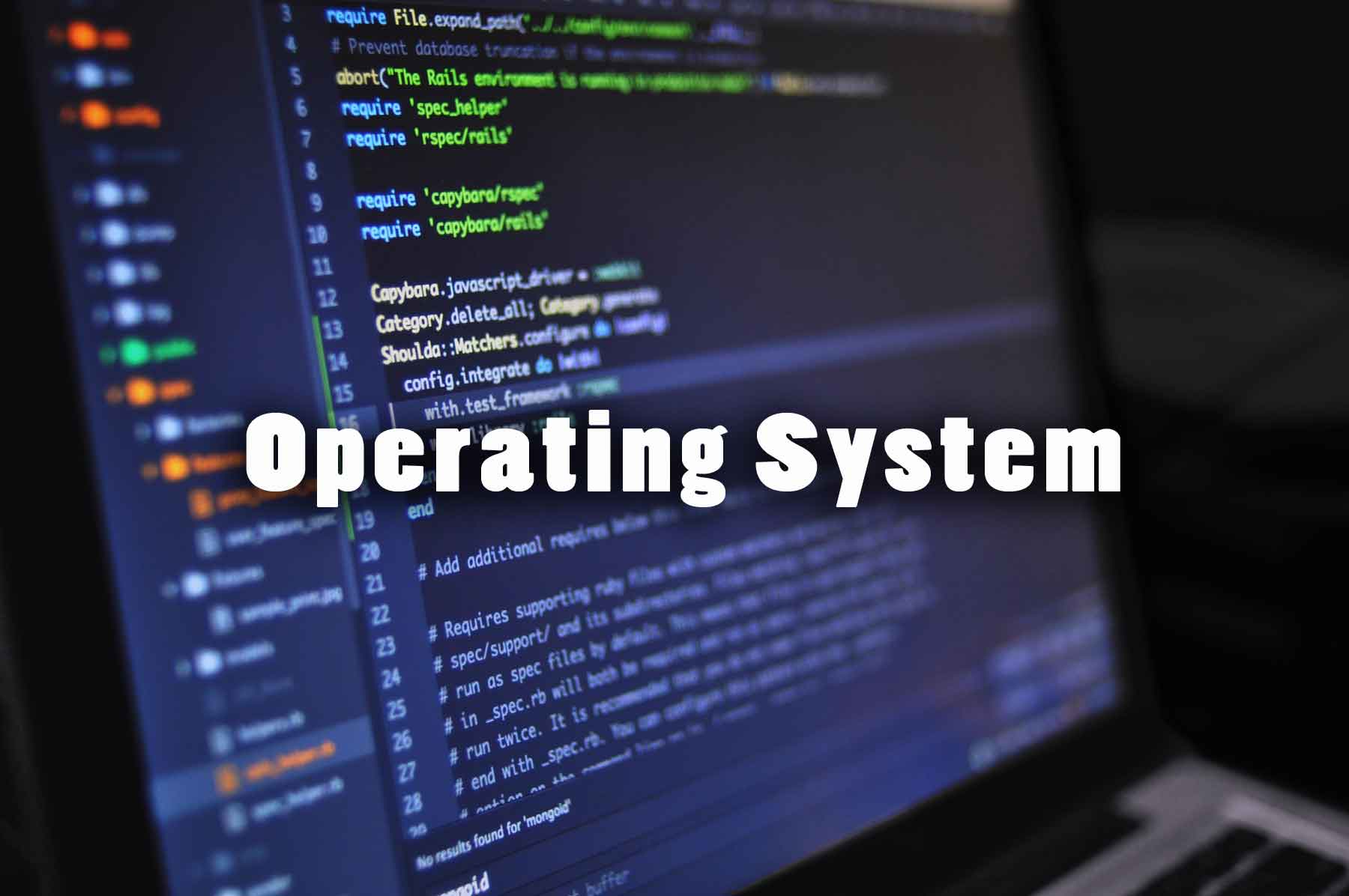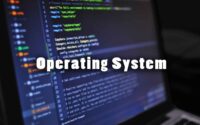Operating System Mock Test
The Free download links of Operating System Mock Test Questions and Answers Papers enclosed below. Candidates who are going to start their preparation for the Operating System Mock Test papers can use these links. Download the Operating System Mock Test Papers PDF along with the Answers.
Operating System Mock Test Papers are updated here. A vast number of applicants are browsing on the Internet for the Operating System Mock Test Question Papers & Syllabus. For those candidates, here we are providing the links for Operating System Mock Test Papers. Improve your knowledge by referring the Operating System Mock Test Question papers.

Mock Test Questions and Answers on Computer Networking
1. Address Binding is defined as that
(a) A compiler will typically bind these symbolic addresses to relocatable addressees
(b) Each binding is a mapping from one address space to another
(c) The linkage editor or loader will in turn bind these relocatable addresses to absolute addresses
(d) All of the above
2. Compile time
(a) where the process will reside in memory, then absolute code can be generated
(b) where the process will reside in memory, then the compiler must generate relocatable code.
(c) if the process can be moved during its execution from one memory segment to another, the binding must be delayed until run time
(d) all of the above
3. Load time
(a) where the process will reside in memory, then absolute code can be generated
(b) where the process will reside in memory, then the compiler must generate relocatable code
(c) if the process can be moved during its execution from one memory segment to another, then binding must be delayed until run time
(d) all of the above
4. Execution time
(a) where the process will reside in memory, then absolute code can be generated
(b) where the process will reside in memory, then the compiler must generate relocatable code
(c) if the process can be moved during its execution from one memory segment to another
(d) all of the above
5. In dynamic loading
(a) for better memory utilization use dynamic loading
(b) it requires special support from the operating system
(c) disadvantage is that unused routine is never loaded
(d) all of the above
6. In dynamic loading
(a) for better memory utilisation, use dynamic loading
(b) dynamic loading does not require special support from the operating system
(c) advantage is that unused routine is never loaded.
(d) all of the above
7. Stub
(a) is included in the image for each library routine reference
(b) is small piece of code that indicates how to locate the approximate memory resident library routine
(c) indicates how to load the library if the routine is not already present
(d) all of the above
8. Overlays used where
(a) a process can be larger than the amount of memory allocated to it
(b) keep in memory only those instructions and data that are needed at. any given time
(c) both (a) and (b) above
(d) none of these
9. Pass I is used in
(a) two pass assembler
(a) in pass 1, it constructs symbol table
(b) none of these
(c) both (a) and (b) above
10. In pass 2
(a) it generates machine language code
(b) symbol table and common support routine used by pass 2
(c) both (a) and (b) above
(d) none of these
11. Logical address is
(a) an address generated by the CPU
(b) address seen by the memory unit
(c) both (a) and (b) above
(d) none of these
12. Physical address is
(a) an address generated by the CPU
(b) an address seen by the memory unit
(c) both (a) and (b) above
(d) none of these
13. The compile time and load-time address binding schemes are
(a) where logical and physical addresses are the same
(b) where logical and physical addresses differ
(c) both (a) and (b) above
(d) none of these
14. Execution tine address binding scheme
(a) where physical address and logical address are the same
(b) where physical address and logical address differ
(c) both (a) and (b)
(d) none of these
15. Memory management unit (MMU) is
(a) a hardware device
(b) run time mapping from virtual to physical address
(c) both (a) and (b) above
(d) none of these
16. Relocation register is
(a) one which base register
(b) the value which is added to every address generated by a user process at the time it is sent to memory
(c) both (a) and (b) above
(d) none of these
17. Backing store
(a) is required by swapping
(b) is commonly a fast disk
(c) none of these
(d) both (a) and (b) above
18. The variant of swapping is called
(a) roll out
(b) roll in
(c) none of these
(d) both (a) and (b) above
19. In Internal fragmentation
(a) allocated memory may be slightly larger than the requested memory
(b) allocated memory may be slightly smaller than the requested memory
(c) both (a) and (6) above
(d) none of these
20. Solution of the problem of external fragmentation is
(a) Compaction
(b) Linking
(c) Loading
(d) All the above
| Practice Questions | Objective Papers |
| Quiz | Important Questions |
| Mock Test | Previous Papers |
| Typical Question | Sample Papers |
| MCQs | Model Papers |
21. Solution of external fragmentation is
(a) Compaction
(b) Paging
(c) none of these
(d) both (a) and (b) above
22. Associative memory (registers)
(a) built of especially high speed memory
(b) each register consists of two parts
(c) both (a) and (b) above
(d) none of these
23. Hit ratio
(a) is percentage of time that a page number is found in the associative register
(b) 80 to 98 percent obtained
(c) both (a) and (b) above
(d) none of these
24. VAX architecture
(a) supports two level paging
(b) is 32 bit machine with page size of 512 bytes
(c) logical address space of a process is divided into four equal sections each of which consists of 230 bytes
(d) all of the above
25. In MULTICS
(a) a logical address is formed from an 18 bit segment number and a 16 bit offset
(b) each page in multics consists of 1 K words
(c) both (a) and (b) above
(d) none of these
26. O.S. 12
(a) 32 bit version operating system
(b) page sizes is 4 K bytes
(c) maximum number of segments per process is 16 K
(d) all of the above
27. In virtual memory
(a) programs can be larger than physical memory
(b) this technique frees programmes from concern over memory storage limitations
(c) virtual memory is not easy to implement
(d) all of the above
28. Virtual memory
(a) is the separation of user logical memory from physical memory
(b) only small physical memory is available
(c) virtual memory makes the task of programming much easier
(d) all of the above
29. Virtual memory
(a) is commonly implemented by demand paging
(b) demand segmentation can also be used to provide virtual memory
(c) both (a) and (b) above
(d) none of these
30. Demand paging
(a) is similar to paging system with swapping
(b) process resides in secondary memory
(c) both (a) and (b) above
(d) none of these
31. Pure demand paging
(a) at that points could execute with no more faults
(b) never brings a page into memory until it is required
(c) both (a) and (b) above
(d) none of these
32. Which condition effective access time is equal to memory access time ?
(a) When no page faults
(b) When maximum page faults
(c) Both (a) and (b) above
(d) None of these
33. FIFO algorithm
(a) is simplest page replacement
(b) is easy to understand
(c) its performance is not always good
(d) all of the above
34. Belady anamoly
(a) in which number of page faults for more frame is greater than the number of page faults for minimum frame
(b) in which page fault rate may increase as the number of allocated frames increases
(c) both (a) and (b) above
(d) none of these
35. Optimal algorithm
(a) An optimal page replacement algorithm has the lowest page fault rate for all algorithm
(b) An optimal algorithm will never suffer from Belady anamoly
(c) An optimal page replacement algorithm exists, and has been called OPT or MIN
(d) All of the above
36. In optimal algorithm
(a) replace the page that will not be used for the longest period of time
(b) optimal page replacement algorithm is defficult to dimplement.
(c) both (a) and (b) above
(d) none of these
37. LRU algorithm
(a) Replace the page that will not be used for the longest period of time
(b) Replace the page that has not be used for the longest period of time
(c) Both (a) and (b)
(d) None of these
38. Second chance algorithm
(a) is as a circular queue
(b) a pointer indicates which page is to be replaced next.
(c) replacements degenerates to FIFO replacement if all bits are set
(d) all of the above
39. Counting algorithms have
(a) LFU algorithm
(b) MFU algorithm
(c) None of these
(d) Both (a) and (b) above
40. LFU algorithm
(a) requires that the page with the smallest count be replaced
(b) requires that the page with largest count be replaced
(c) no page will be replaced
(d) all of the above
41. MFU (most frequently used) page replacement is
(a) based on the argument that the pages with smallest count was probably just brought in and has yet to be used
(b) smallest count be replaced
(c) both (a) and (b) above
(d) none of these
42. Global replacement
(a) allows a process to select a replacement frame from the set of all frames
(b) requires that each process selects from only its own set of allocated frames
(c) both (a) and (b) above
(d) none of these
43. Local replacement
(a) allows a process to select a replacement frame from the set of all frames
(b) requires that each process selects from only its own set of allocated frames
(c) both (a) and (b) above
(d) none of these
44. Thrashing
(a) is the high paging activity
(b) is a process if it is spending more time paging than executing
(c) both (a) and (b) above
(d) none of these
45. Working set model
(a) is based on the assumption of locality
(b) Δ is define working set window
(c) working set model is then quite simple
(d) all of the above
46. Thrashing can be avoided if
(a) the pages, belonging to the working set of the programs are in main memory
(b) the speed of CPU is increased
(c) the speed of I/O processor is increased
(d) all of the above
47. The memory allocation scheme subject to “‘external fragmentation is
(a) Segmentation
(b) pure demand paging
(c) swapping
(d) multiple contiguous fixed partitions
48. In virtual memory systems, dynamic address translation
(a) stores pages at a specific location on disk
(b) is the hardware necessary to implement paging
(c) is useless when swapping is used
(d) is the part of the operating system paging algorithm
49. Fragmentation of the file system
(a) can always be prevented
(b) occurs only if the file system is used improperly
(c) can be temporarily removed by computation
(d) is a characteristic of all files system



